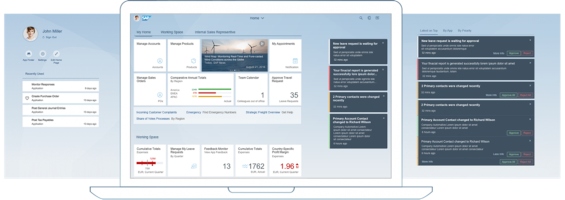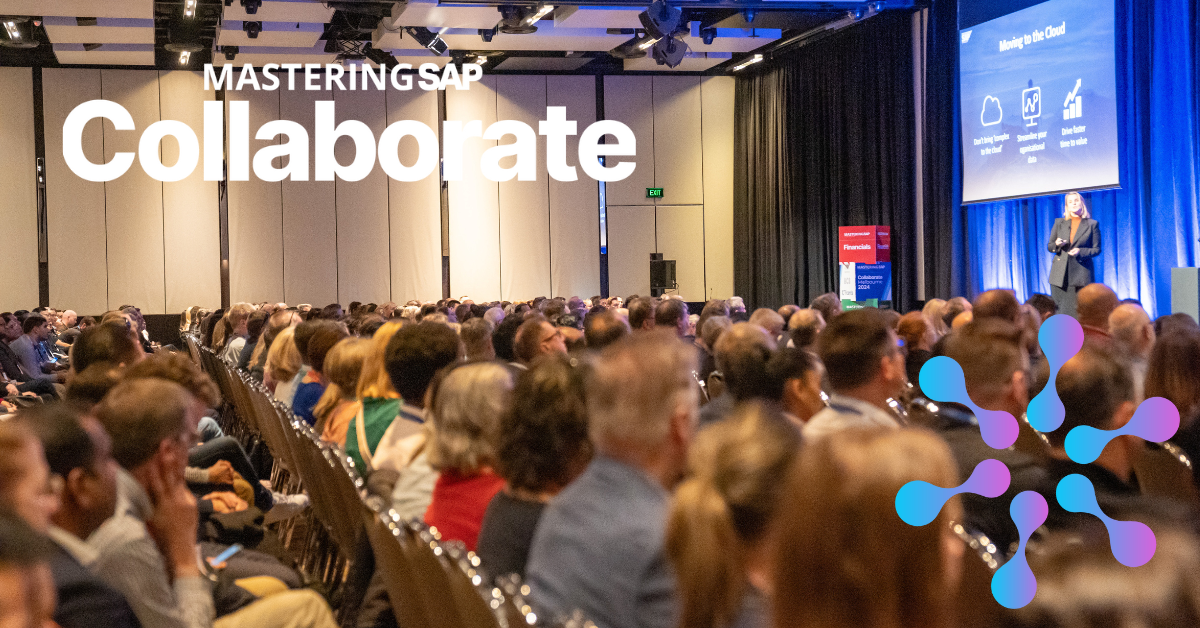Hiding Complexity Puts Users in the Driver’s Seat
The Evolution of SAP Fiori as the Default Design for All Applications
There is a misconception among some SAP customers that SAP Fiori is the same as SAPUI5, the underlying technology that supports design concepts. But this simply isn’t true, and with the recent release of SAP Fiori 2.0, this is as good a time as any to clear up any confusion.
The key difference is that while SAP Fiori is the de facto user experience (UX) for all SAP applications, it can be built using SAPUI5 as well as with other technologies. This is seen with SAP’s partnership with Apple; SAP Fiori for iOS shows that SAP Fiori as a design language can be successfully transported to other technologies — in this case, Swift and iOS instead of SAPUI5. Not every SAP customer may intuitively realize how they interact with SAP Fiori as consumers of enterprise technology, but with the release of SAP Fiori 2.0, the distinction between the design and the underlying technology is an important one to make. Because while many SAP customers have already encountered applications in the SAP Fiori design, they likely do not yet realize that SAP Fiori is now the default design for all SAP applications and will soon have a greater reach regarding how customers engage with enterprise applications at an individual level.
SAP developed SAP Fiori 2.0 to bridge the gaps identified in SAP Fiori and to make it ready for full-blown enterprise software, covering systems of record and systems of engagement. The goal is to support SAP’s evolution into a mobile-first and cloud-first organization as well as guide other companies in their digital transformations. With SAP Fiori 2.0, design is no longer an afterthought, but a necessity.
Explore related questions
SAP Fiori is a change in concept from previous design languages; it focuses on the user rather than on the process.
A Design for All Use Cases
It is worth a brief examination of what drove the development of SAP Fiori 2.0 versus the previous release. One of the primary objectives of the initial SAP Fiori release was to provide a mobile-first design system for simple use cases with the broadest user coverage. This is very different from previous design languages from SAP, which were mostly driven by technology rather than by UX requirements.
SAP Fiori is a change in concept; it focuses on the user rather than on the process. It requires the drastic simplification of complex solutions into activity-based apps to support specific business roles and how people truly work. This requires that we go beyond translating old transactions into a newer technology and actually rethink the business processes from the point of view of a business role and design the end-to-end experience based on that. This puts the user needs at the forefront.
Adopting the SAP Fiori concept and design principles was the catalyst for elevating design and UX as primary considerations in application development. However, as SAP Fiori evolved into the de facto design language for SAP applications, the user interface (UI) elements and design patterns had to evolve as well to cover use cases beyond simple ones. The challenge, then, in developing SAP Fiori 2.0 was to maintain the values and design principles of SAP Fiori while covering the most complex enterprise use cases.
To stay true to the initial SAP Fiori design principles and maintain the same user-centric approach, the development of SAP Fiori 2.0 followed the design-led development approach that was formalized while building the first SAP Fiori applications. The design-led development process brought several development teams from all over the globe to SAP’s Walldorf, Germany, headquarters for an intensive two-week design thinking workshop. After arriving at common definitions for things such as points of view, personas, and use cases, they then completed an entire design-thinking cycle: iterating on design ideas in concert with SAP Fiori experts, creating mock-ups, checking feasibility, and finally signing off on the next development steps.
The question, then, became how to scale this concept throughout the entire organization. As additional teams started to build SAP Fiori applications, the process was formalized with a singular, pragmatic design-thinking approach that could be easily followed. Today, the design-led development process is part of SAP’s regular development process and was vital to shaping SAP Fiori 2.0 in a consumer-centric fashion for all use cases and for any device.
SAP Fiori 2.0 moves away from the engineering-driven concepts that are well established in business software and instead leverages the way people want to work. The power of how to access and interact with business software is back in the hands of the user.
Shedding Complexity for the End User
Following the design-led development approach in the development of SAP Fiori 2.0 ensured that feedback from customers and from internal lines of business would be incorporated into the final design plans. Much of this feedback centered on how, as the default design for all SAP applications, SAP Fiori 2.0 would closely mirror customer expectations for what the UX should be. These expectations are similar in nature to the expectations for consumer-grade software, such as having one user profile for all applications, one settings dialog that spans all screens, and an app store type of cataloging system scalable for enterprise needs. And, of course, the expectation that the UI have the same look and feel, and work in the same way, on any device.
Meeting these expectations for SAP Fiori 2.0 entailed looking at how to make important improvements by incorporating a variety of elements. These include improved floorplans that could accommodate more content and manage multiple sessions in parallel, enhanced application management, better navigation capabilities, unified notifications, better animations, and a digital helper to facilitate the gathering of information. Underpinning each of the innovations was the requirement that SAP Fiori 2.0 enable various types of users in multiple working environments to easily adopt a mobile-first design approach and move from their desks to the shop floor, the warehouse, meeting rooms, or face-to-face customer encounters.
Every step of the way, design and user centricity have been paramount in our considerations. For this reason, we are particularly pleased with the results of our partnership with Apple and the development of SAP Fiori for iOS, where together with Apple, we are jointly defining a design that maintains the elegance and cleanness iOS is known for while also supporting the robustness and scale required in the enterprise to enable organizations to mobilize large segments of their workforce.
Ready to Launch
From SAP Fiori launchpad, users can access all their business applications via a single, personalized access point. Allowing users to manage their content themselves empowers them to get the most out of their applications rather than entrusting an administrator to decide what’s best. They are free to explore new ways of working that best fit their roles.
The design-led development approach was critical for two main reasons. On one hand, SAP Fiori 2.0 could be developed for established business scenarios in a digital and mobile framework, presented to the user with SAP Fiori launchpad. On the other hand, we could also meet the challenges of integrating conversational UI and machine learning into the SAP Fiori user environment.
Our research indicates that users would like to have a digital helper to facilitate information gathering that they can converse with using natural language. What had been initially called “Engage” has evolved into SAP CoPilot, the digital assistant for the enterprise. SAP CoPilot will transform the way users interact with business software. It will give users unparalleled access to the power of SAP systems, using their natural language, in the context of their business.1
Designing machine intelligence and conversational UI into enterprise applications is at a very early stage. While there is still a lot of uncertainty regarding the technology and how the human-machine relationship will evolve because of machine learning and natural language processing, we all know that this change will come and will have a huge impact on our lives. The important point, however, is that a design thinking methodology acknowledges and appreciates the fact that there is a lot happening under the hood with machine learning and an entire industry is figuring out what to do with it.
While there are seemingly infinite possibilities, such as machine learning supporting users by giving them specific suggestions, it is important that SAP Fiori maintain the philosophy of being centered around the user. The challenge is to strike the right balance between machine learning being helpful and the user not losing control.
Design Evolution That Keeps Users in Control
Understanding the role machine learning will play regarding how a user engages with business applications speaks to the fact that SAP Fiori is a fluid work in progress. Its role as the default design language for SAP applications means that it is always evolving in accordance with changing user expectations. This capacity for change is built-in; reusable elements, or controls, within SAPUI5 are a feature of SAP Fiori design elements that helps customers maintain a consistent enterprise UX as they use SAPUI5 and other technology such as SAP Fiori for iOS to build, run, and extend their application landscape using SAP Fiori design.
The flexibility of SAP Fiori to fit the unique needs of a business and each individual user is an important concept. It is also central to the development and release of SAP Fiori 2.0, which moves away from the engineering-driven concepts that are well established in business software and instead leverages the way people want to work. With SAP Fiori 2.0, the power of how to access and interact with business software is back in the hands of the user.
1 For more information on SAP CoPilot, see “Discover the Digital Assistant for the Enterprise,” a Q&A with Maricel Cabahug in this issue of SAPinsider. [back]








